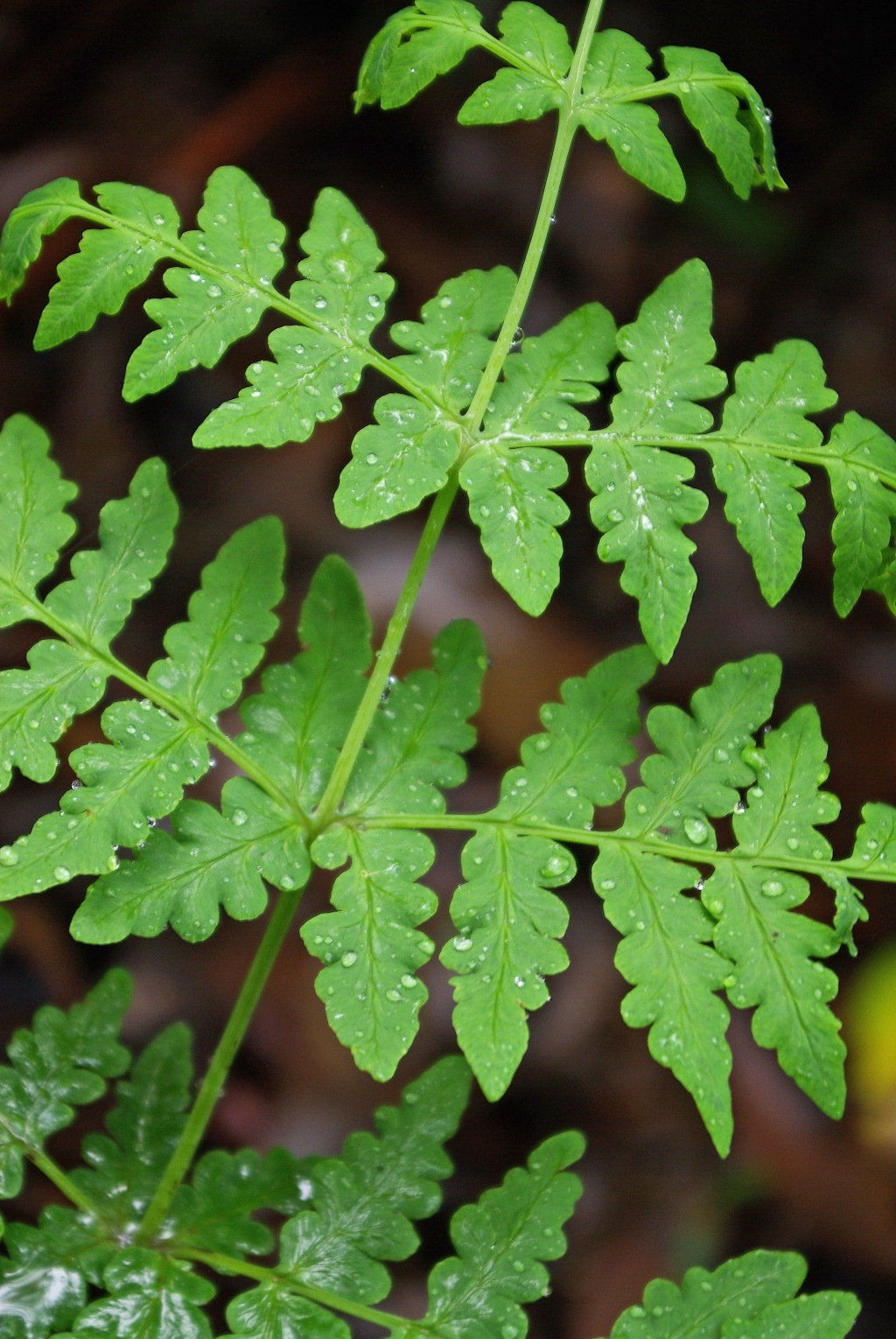Histiopteris incisa
(Thunb.) J.Sm. Bat's Wing FernRhizome long, 4–8 mm diam., covered with metallic-shiny, brown, hair-tipped scales, 4–10 mm long. Fronds distant, erect, 60–200 (rarely to 300) cm long, soft to firm, fertile lobes a little narrower than sterile ones. Stipe thick, succulent and whitish blue-green when young; mature stipe relatively thin, long, red-brown or paler, shiny, smooth with a few fine scales near base. Lamina 2–3-pinnate, glabrous, roughly triangular, blue-green to pale green, or yellow-green when exposed. Rachises flattened, particularly at pinnae-junctions, slightly grooved. Pinnae paired, opposite, sessile, distant, with paired, stipule-like basal lobes set at a wide angle adjacent to main rachis; pinnules variously shaped, asymmetrical, broadly oblong to deltoid, bases broad and slightly decurrent, margins entire or slightly crenate, apices blunt; veins prominent, forked several times, connecting veins forming narrow areoles near midveins. Sori submarginal, elongate, not around tips of lobes, protected by pale, membranous, recurved marginal flap.
LoM, Wim, GleP, VVP, GipP, OtP, WaP, Gold, CVU, GGr, NIS, EGL, EGU, WPro, HSF, HNF, OtR, Strz, MonT, HFE, VAlp. All States except WA. New Zealand, southern Africa, South America, West Indies. Common in Victoria, mostly in forested gullies and occasionally swamps, readily colonizing forest track margins and ground disturbed by fallen trees etc.
See also notes under Pteris comans.
Entwisle, T.J. (1994). Ferns and allied plants (Psilophyta, Lycopodiophyta, Polypodiophyta). In: Walsh, N.G.; Entwisle, T.J., Flora of Victoria Vol. 2, Ferns and Allied Plants, Conifers and Monocotyledons, pp. 13–111. Inkata Press, Melbourne.
 Spinning
Spinning




